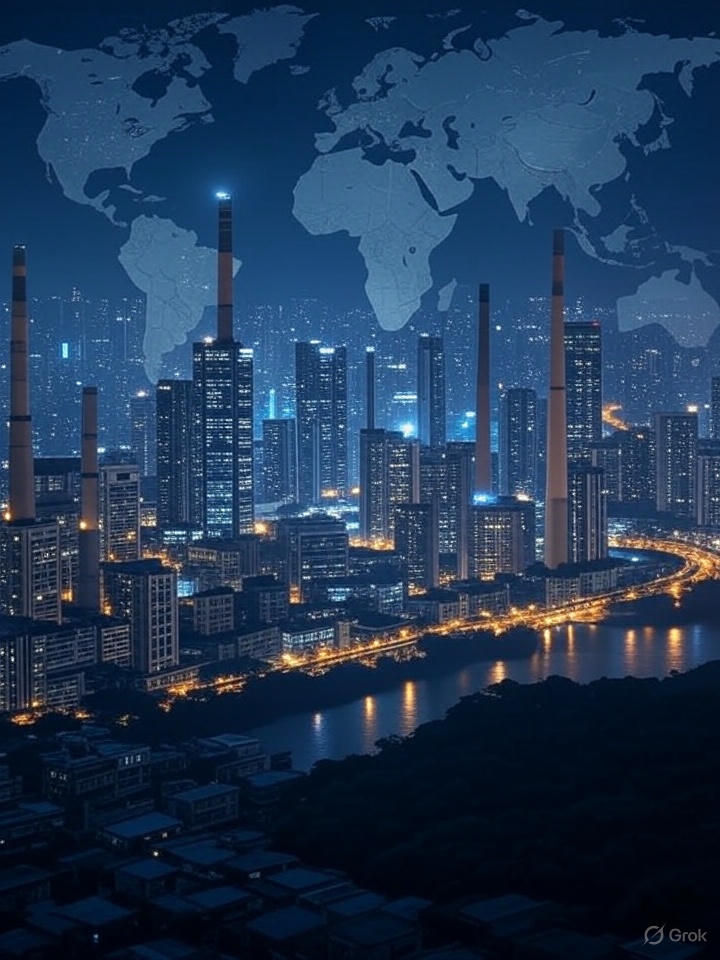The Urban Heat Crisis: Mumbai, New York, London, Shanghai, Is It Just the Heat, or Are We Cooking Up a Bigger Mess?
- thebrink2028
- Jun 6
- 2 min read

Why Cities Are Hotter Than Ever
Urban areas are warmer than their rural surroundings due to the urban heat island (UHI) effect, where concrete, asphalt, and buildings absorb and re-radiate heat, creating localized hotspots. In Mumbai, the average temperatures rose by 2.2°C as the city’s built-up area increased by 66%. New York City’s concrete canyons can be 1–7°F warmer than nearby rural areas during the day, and up to 5°F hotter at night. London’s dense urban core amplifies temperatures by up to 4°C. Shanghai sees UHI effects intensified by rapid industrialisation, with heat-related mortality rising.
Low albedo (reflectivity) of urban surfaces like asphalt absorbs solar radiation, releasing it slowly at night. Reduced vegetation limits evaporative cooling, and waste heat from vehicles and air conditioners adds to the problem. Urban areas are warming at 0.021°C per year, with low- and middle-income cities facing the steepest increases. Historical inequities, like redlining in U.S. cities, have left marginalised neighbourhoods with less tree cover, making them up to 7°C hotter.
More Than Just Heat: A Cascade of Consequences
Extreme heatwaves, projected to affect 1.6 billion urban dwellers, are the deadliest climate risk, claiming half a million lives annually. Health impacts include heat stroke and cardiovascular strain, hitting the elderly, children, and outdoor workers hardest. Mumbai’s densely packed areas become “unbearably hot”. Economically, heat could cost 12 global cities $84 billion annually. Infrastructure strains under heat, and increased energy use for cooling drives up greenhouse gas emissions.
Housing prices are soaring hotter than a Mumbai pavement, with million-dollar shoebox apartments in London and Shanghai. Overpopulation is squeezing cities, by 2050, 68% of the world’s population is expected to be urban, (unless intervention), with 90% of growth in Asia and Africa. Vertical expansion traps heat, turning cities like New York and Mumbai into “pressure cookers”.
A Sizzling Dystopia
In the near future, life-threatening heat and humidity will impact half to three-fourths of the global population, with cities facing double the heat stress. New York could see 60% more days above 35°C. But solutions exist: Seoul’s tree-planting cut heat significantly, Paris’s “cool islands” lowered temperatures by 4°C, and sustainable materials can help reduce heat absorption. the questions is when, now when we know whats coming or then when it has already arrived.
TheBrinks Solutions: Cooling the Concrete Jungle
Green Infrastructure: Trees and green corridors can lower temperatures by 15°C.
Reflective Surfaces: White roofs and streets reflect heat, as seen in Los Angeles.
Smart Urban Planning: Climate-sensitive building codes enhance ventilation.
Heat Action Plans: Cooling centers and worker protections, as in Athens, save lives.
Global Cooperation: Funds like the Green Climate Fund support resilient infrastructure.
The heat crisis is a wake-up call. With science-backed solutions and global solidarity, cities can cool down and thrive or not.
-Chetan Desai (chedesai@gmail.com)


